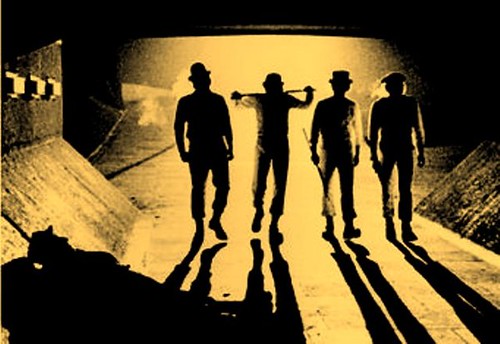Adolescent aggression
Anti social behaviour during adolescence is statistically normal, and only a small proportion continue to behave in an antisocial way into adulthood. Criminological research shows that the prevalence of criminal involvement peaks during middle to late adolescence then declines rapidly and tapers off for most by their early twenties.
(My response: One wonders what is the evolutionary advantage of having a criminal youth? Perhaps they give society a spark that results in change if need be. Keeps society on its toes so to speak?)
(My response: One wonders what is the evolutionary advantage of having a criminal youth? Perhaps they give society a spark that results in change if need be. Keeps society on its toes so to speak?)
Anger management
Four core components of anger management.
1. Exposure to provocation that leads to some level of emotional arousal.
2. Cognitive change that mediates the automatic thoughts which lead to angry feelings.
3. Self management skills that lead to the development of appropriate coping skills
4. Relaxation to reduce physiological arousal and manage stress.
Engaging the violent client
One of the biggest challenges in working with the aggressive and violent client is engaging them in the process of change. Some (many) will resist taking responsibility for their own feelings and violent behaviour. Some steadfastly maintain they were justified in their behaviour and it was appropriate for them to act violently. Habitually aggressive people can be hostile towards treatment providers.
Youth violence: family risk factors.
Poor behaviour management practice by parents such as poor supervision
High levels of family conflict
Family history of antisocial behaviour
Childhood abuse and neglect
All of the above comes from:
InPsych: Bulletin of the Australian Psychological Society, June 2013.
Transactional analysis and youth violence
One would propose the presence of an early violence decision. This is similar in nature to the suicide early decision that I discuss in detail in my book - Working with suicidal individuals.
When a young child makes the suicide decision it means it decides that suicide is a viable option as a problem solving technique should it to choose to use that option later in life. The violence decision is the same. The young child makes an early decision that violence is a viable option to solve a problem. If this decision is not made then that person will be very unlikely to use violence as a solution to a problem in adulthood. As is the same with the suicide decision.
Three aspects of violent behaviour
One can look at two further aspects of the violence decision which can be made in childhood and are presumed to be a prerequisite for any pattern of violent behaviour exhibited by youth or adults.
It seems reasonable to assume that the child who is likely to make the early violence decision would have a natural temperament of fight, versus flight or freeze. That child who has an inbuilt propensity to deal with stress and adversity by fighting rather than fleeing or using the 'play dead' response.
It seems plausible that the individual who has a natural temperament of fight is more likely to adopt the life position of You're not ok. Hence we have an interaction between three variables. The temperament of fight, the life position of You're not ok and the early violence decision. Each one supporting the other thus making the violent individual quite resistant to therapeutic interventions because of this intertwined effect between these three personality factors.
The violence decision
This allows us to formulate a hypothesis on the psychology behind the violent and aggressive client. It shows a process of how the factors of temperament, life position and early decision could be seen to combine.
The suicide decision
Contemporaneously we can propose a similar process for suicidal behaviour. The temperament type in suicidal behaviour could be seen to be primarily the flight response. One could also argue that Fight can result in some of the suicide decisions. Debate on this exists though, as some argue that fight is simply used as a means to fulfill the primary response of flight.
Graffiti





No comments:
Post a Comment